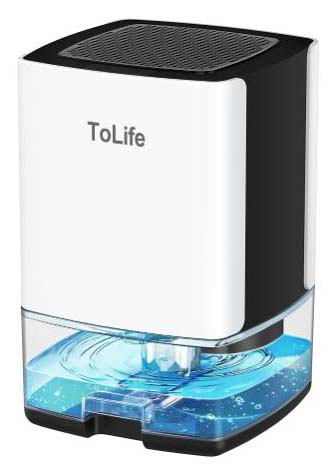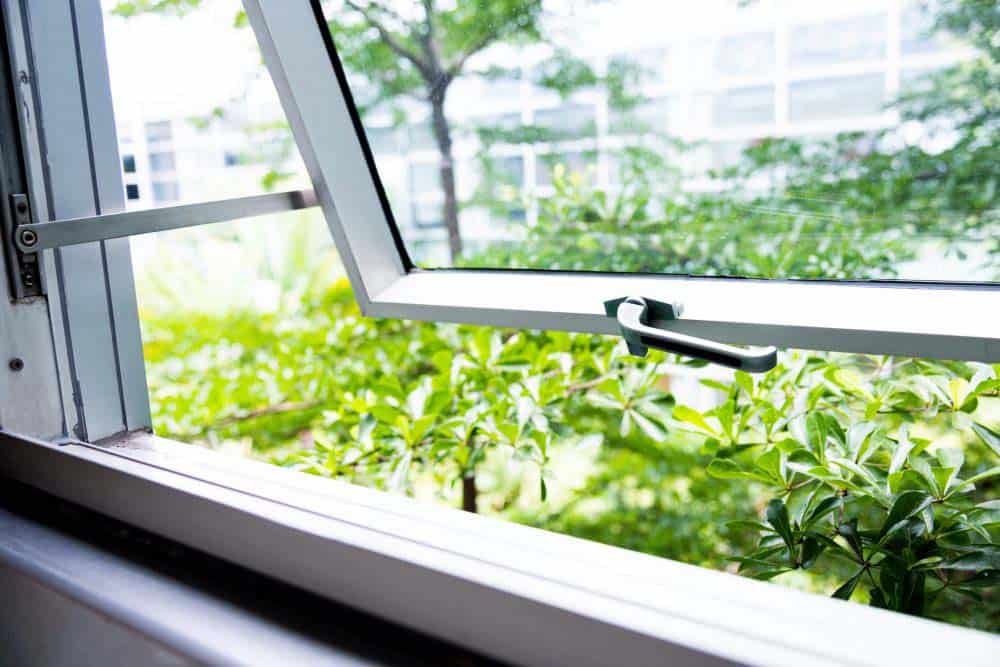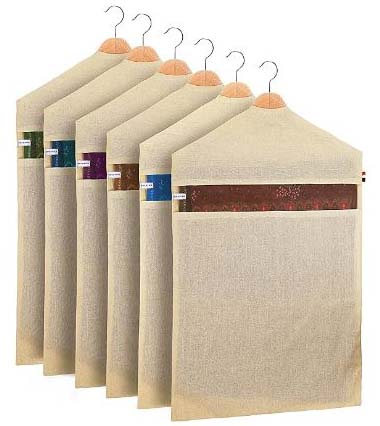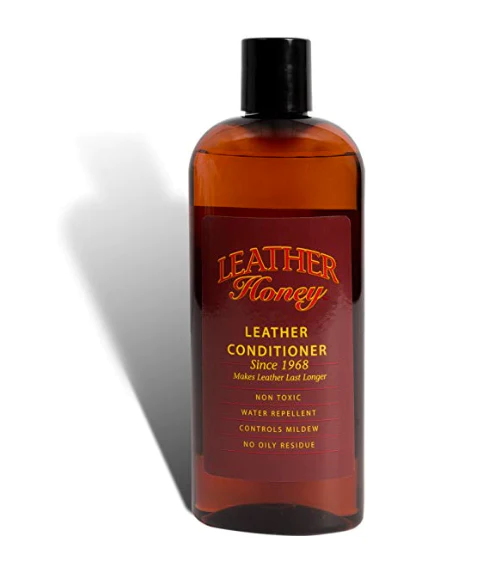Storing leather so it doesn’t deteriorate, degrade, fade or become mouldy is simple if you know what the ideal conditions are. There are a few things to be aware of if you wish to store leather for any length of time.
To store leather for long periods you need the best environment/ conditions possible. By keeping leather dry, healthy and protected you will increase its lifespan. Temperature, humidity, location, leather type, protection barrier, dust and ventilation are the main factors to pay attention to.
What conditions are best for storing leather? Should it be hung, rolled or folded when stored? Are colder or humid conditions more suited to storing leather? Should leather be conditioned before going into storage?
To store leather for a lengthy period you will need to take into account the following things:
- Location
- Temperature
- Humidity
- Ventilation
- Covered or uncovered
- Type of leather
- Leather conditioner
- Folded, rolled or hung
Best Location to store leather.
One of the most important factors to consider when storing leather is location. Choose an area that is out of direct sunlight. Preferably an area that gets some ventilation and is in the shade or in a slightly cooler location. Sunlight will cause leather to fade and quickly dry out, resulting in cracks and peeling leather. Leather should be kept out of or away from damp spaces that have a higher moisture content.
Do not store leather too close to a concrete/cement floor as concrete releases moisture which could be absorbed by leather. Leather items should be stored at least 600mm (24 inches) above a concrete/ cement floor in order to avoid moisture absorption.

Best Temperature to store leather.
Ideally, leather should be kept in an area which doesn’t get too hot and stays at an even temperature throughout the day and night. A good temperature to store leather is between 18-24 degrees celsius (65-70 Fahrenheit) as its neither too hot or too cold.
There shouldn’t be big temperature difference between day and night as it can result in leather losing valuable natural oils. A warm attic space during the day may be freezing cold at night and unsuitable for storage. Damp basements or cellars should be avoided as their higher moisture content will damage leather and cause mould and mildew to grow.
If temps are too high leather will begin to lose moisture and oils will evaporate resulting in dry cracked leather. In these conditions leather should be checked regularly and leather conditioner applied if necessary.

Ideal Humidity for storing leather.
Climates with high humidity are not great for storing leather. Humidity is a measure of how much water vapour is in the air. As we all know too much moisture is not good for leather as it can be absorbed and bind with the oils inside. As the moisture can’t escape because there is too much in the surrounding air it will result in the growth of mould.
The maximum humidity should be between 45-55% if possible and should not exceed this level for prolonged periods. Too much humidity, ie. tropical areas will create the perfect conditions for mould to grow on leather.
One solution to reduce humidity is to purchase a de-humidifier as this can help in regulating humidity levels. An air conditioner can also help to a certain degree as they cool down the temperatures and also dry out the air.
There are plenty of dehumidifiers available and prices vary depending on the size and space that it has to dehumidify. Check out this Amazon link if you are interested in purchasing one. It’s only $37 and is suitable for smaller spaces up to 500sqft. (46sqm) and comes in a variety of colours and has an auto shut off function and quiet mode operation.
Another solution to reduce humidity is to store leather in an area with good ventilation. By keeping a window or door open and allowing a natural breeze to flow into the room you are effectively replacing the old air with new fresh clean air.

Is Ventilation important when storing leather.
Ventilation and ventilated spaces are good for storage because it removes dust and dirt build up. Ventilation also helps get rid of moisture by circulating air around leather. This helps prevents mould from growing as the spores don’t get sufficient time to settle and multiply. It also prevents air or surroundings from becoming stale and damp.
If you don’t have a storage space with openable windows or adequate ventilation an alternative solution is to buy a small electric fan that you can use in the space. They are fairly cheap and help prevent dirt, dust and mould build up and growth. If you happen to be looking for a new small electric fan then check out this one on Amazon for $12. Its small, powerful and quiet and does the job perfectly.

Should leather be covered or uncovered when stored.
Leather should be covered in a breathable fabric such as cotton cloth when in storage. If possible the fabric/ cloth should be a dark colour (eg. black or navy blue). Dark colours block out much more sunlight than lighter colours. The darker colour prevents light getting through the cloth and causing the leather to fade.
Cotton is a breathable fabric which allows moisture to escape and enter when in storage. Air will freely circulate and ventilate around your leather, keeping it moisture free.

Do not store leather in plastic as it prevents leather breathing as its impermeable. Plastic will trap any moisture inside leather and not allow air to flow. This will cause mildew and mould to grow.
Covering leather also provides a physical barrier of protection against dust, dirt and moisture. Dust particles can be abrasive and can damage leather when rubbed or cleaned.
A variety of Cotton covers are available on the Net and Amazon which are large enough to hang jackets, pants and skirts easily. There are also smaller cotton covers for smaller items such as bags, wallets etc. They are eco-friendly, re-usable and washable which make them ideal for storage. If you are interested have a look at these on Amazon.
Should leather be Folded, rolled or hung when stored.
Leather jackets, skirts and pants should never be folded when in storage. Folding leather causes creases and wrinkles that are difficult to remove. Creases can also cause uneven discolouration in your leather and make it look worn out and faded. A better option is to rather hang your leather jackets, pants, skirts with decent hangers.
Hanging jackets, pants and skirts is the best way to store them off the ground with limited creases or wrinkles. The shape of the hanger is also important as it allows the form of the jacket or skirt to be maintained when stored. It’s important to buy decent hangers that are strong and will not mark or stain your leather clothing. I prefer to use wooden hangers over plastic or metal because the metal ones can rust and cause damage to leather. For some great wooden hangers have a look at these on Amazon.
Rolling up leather hides is ok if you can’t hang them up. There are methods to flatten leather should you want to use them again. Ideally hides should be hung up, but not all of us have space for this and rolling is the only other option. Check out a previous post I wrote on how to flatten leather if you want to see the various methods to flatten leather.
Other leather items such as handbags, satchels, shoes, gloves etc. should be stuffed with rolled balls of acid free paper when in storage. This helps to keep the shape/form of the shoe or bag. The crumpled paper gives leather additional support and breathing space when in storage.
Another important point is that you must never lay leather on top of each other when in storage. A good idea would be to place cardboard in between each hide so as to keep them separated.
Should leather be conditioned before it gets stored.
Leather should be given a thorough cleaning before it’s placed in storage. Cleaning removes any dirt, dust and mould build up. Once cleaned, leather needs to be well conditioned in order to replenish its natural oils and moisture. Allow a day or 2 after conditioning for excess conditioner to seep out of the leather before placing in storage. Don’t forget to wipe away any excess conditioner. The best conditioner I can recommend is Leather Honey. It’s a 100% natural recipe that is a well kept family secret.

Can different types of leather be stored together.
Different types, tannages or colour leathers shouldn’t be stored together. They should be kept apart and shouldn’t come into contact with each other. The different oils and colours will react with each other if they are touching and will bleed into each other. Leather dyed one specific colour could transfer its colour to another hide. Do not place different types of leather hides on top of each other when in storage. It’s a recipe for disaster as the hides will discolour.
How long can leather be stored.
If you have the perfect conditions as mentioned above you can safely store leather for 1-2 years. That doesn’t mean you can put your favourite leather jacket in a cupboard and leave it for 2 years without checking on it. Care should be taken to take it out of storage every 3 months to check if it needs to be conditioned, cleaned or to check for mould or smells.
It also depends on how old or the type of leather you are storing, and when it was last conditioned or cleaned. Have a look at this previous post I wrote on the lifespan of leather if you would like to learn a bit more about caring for leather. And, lastly another handy post to check out is 25 products that will ruin leather.
Conclusion
The best conditions to store leather are varied but very easy to follow. Climate, humidity, ventilation, location and how leather is stored all play a role in extending its life. If you stick to the points listed above you shouldn’t have any issues when storing leather. Thanks for reading.
